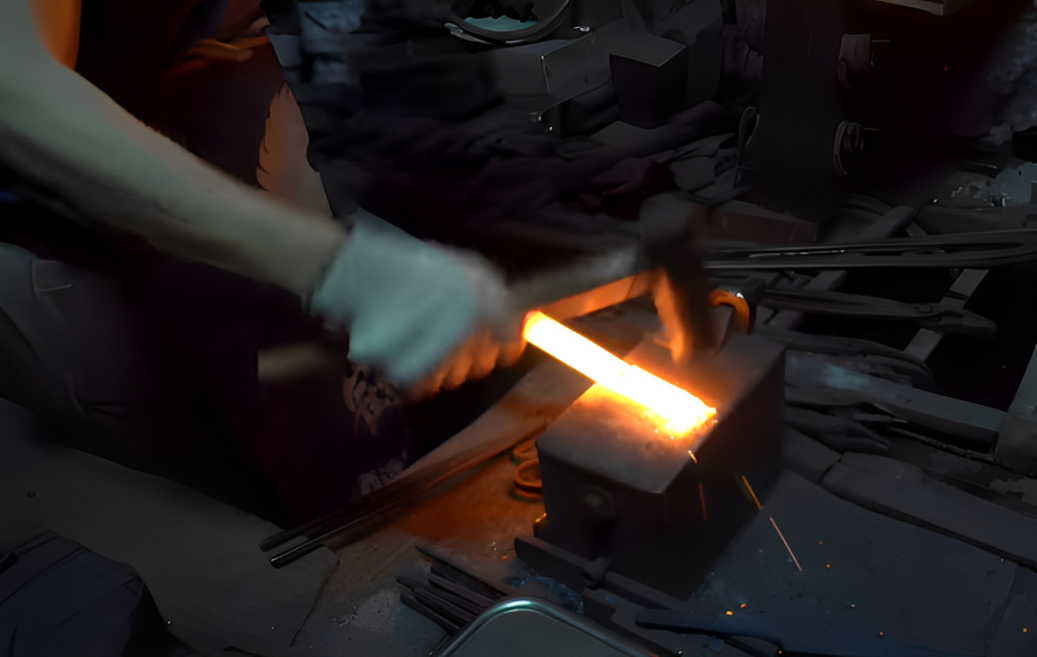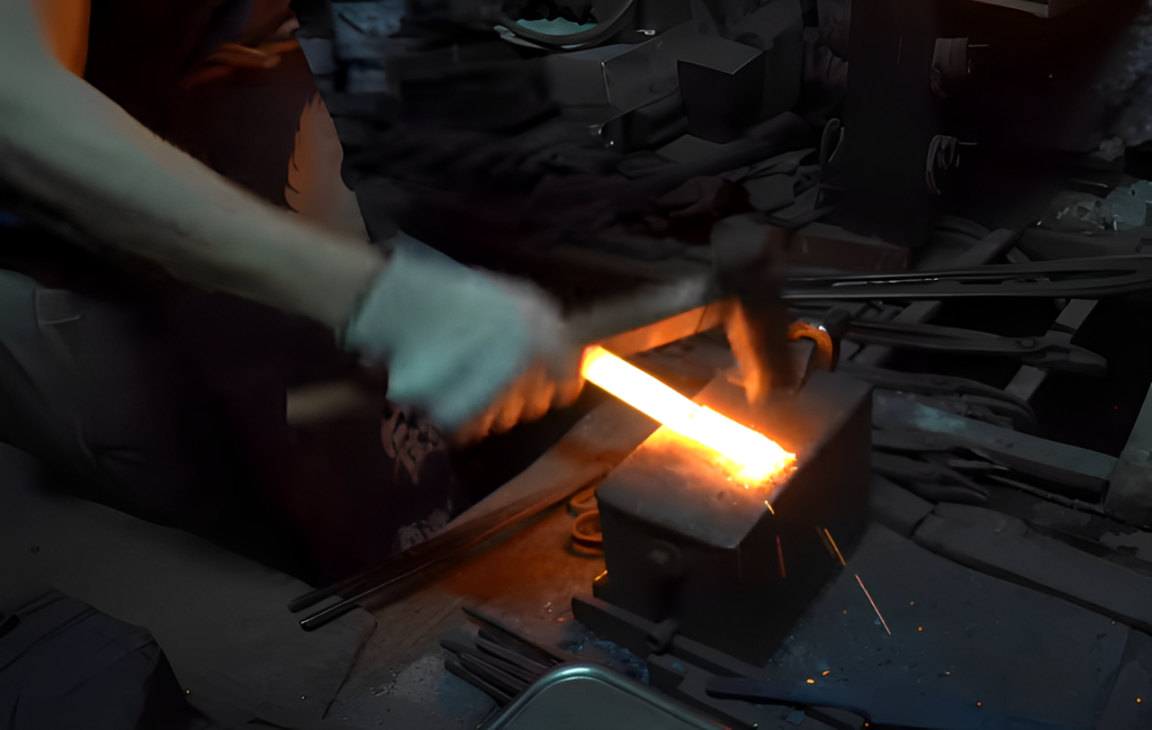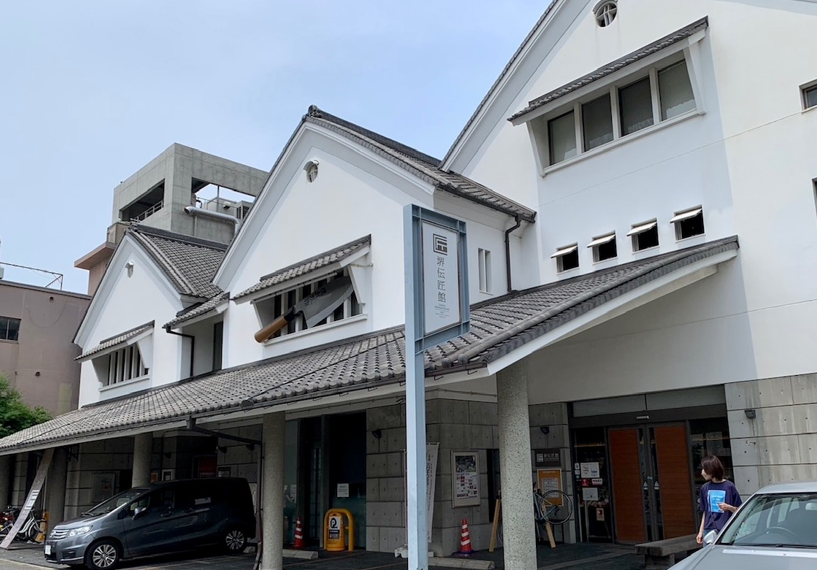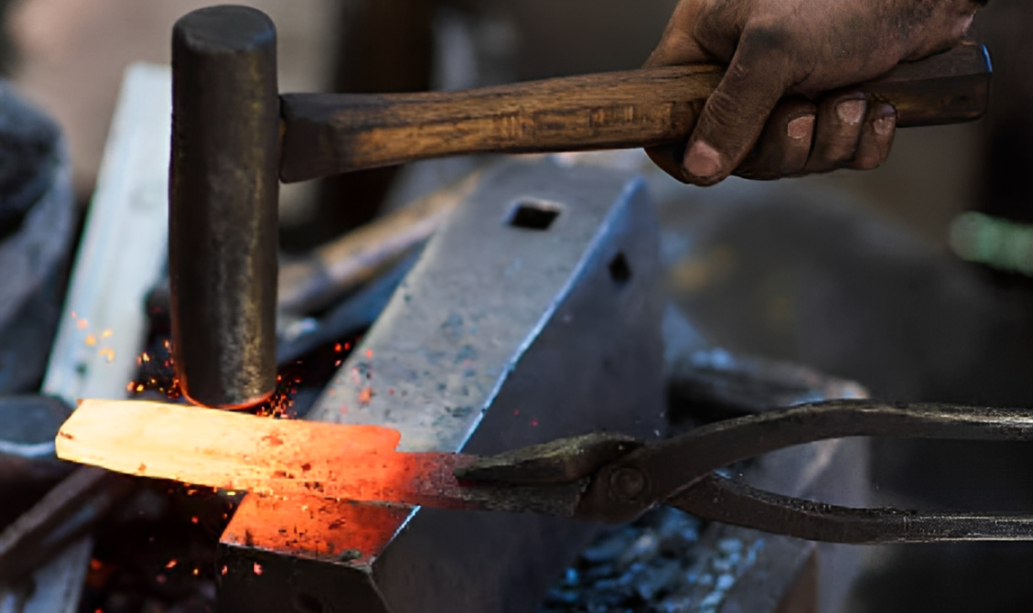
Why do 98% of Japanese Chefs Use Knives from Sakai?
-
There’s a reason Japan’s top chefs trust Sakai.
For over 600 years, Sakai City has been the heart of traditional Japanese blade-making. From samurai swords to professional kitchen knives, its legacy of craftsmanship continues to shape the culinary world today.
In this video, we explore why 98% of Japanese chefs choose knives from Sakai. -
-
-
Discover why well over 90% of the knives used by Japan’s professional chefs come from Sakai, Osaka—despite holding only a small share of the household market. This dominance is no accident: Sakai’s knife-making tradition is officially recognized by the Japanese government as a Traditional Craft of Japan, and its reputation has been forged over more than six centuries.
-

-
From the Edo period’s famed tobacco knives, once a monopoly product of the Tokugawa shogunate, to today’s world-class wa-bocho, Sakai’s artisans have passed down skills of exceptional sharpness and precision. Their unique division-of-labor system and full handcraftsmanship continue to set Sakai apart, making it the trusted choice for chefs in Japan’s most demanding kitchens.
-
In this article, we’ll explore the two core reasons why Sakai knives have earned such unmatched trust in the culinary world.
Reason 1: Specialization That Perfects Every Stage
-
-

Sakai’s knives are born from a division-of-labor system where each critical stage is executed by a different master:
-
-

The Bladesmith
Forges and shapes the blade’s profile and structure.
-

The Sharpener
Creates the cutting edge, often using a progression of many whetstones for micro-level precision.
-

The Handle Maker
Fits, balances, and aligns the handle for lasting comfort and control.
-
This model concentrates decades of practice into each step, yielding finer geometry, truer edges, and more consistent finishes than an all-in-one workflow can typically deliver. The system itself—blacksmithing / sharpening / handle-fitting handled by specialists—is a defining feature of Sakai cutlery.
-
-
The Art of Knife-Making: Division of Labor vs. Integrated Production
-
In the world of knife-making, there are two distinct approaches: division of labor and integrated production. Each has its own appeal, but the division of labor, in particular, harnesses the expertise and passion of specialized craftsmen to create truly traditional and unique products.
-

Reason 2: Handcraftsmanship at Every Step
-
-

-
From the initial forging—hammer-welding steel and iron—to final edge work and handle fitting, Sakai production prioritizes manual control. Subtle hand adjustments (heat, hammering, stone selection, alignment) enable razor-sharp yet resilient edges with a refined finish that mass-production struggles to replicate. This is why Sakai remains the reference point for professional tools even as other regions have leaned further into automation.
Why Sakai Knives Stand Above the Rest: The Craft Behind Japan’s Most Trusted Blades
-
 Source (98% data): Sakai Tourism Bureau
Source (98% data): Sakai Tourism BureauSakai’s strength lies in a craft built over centuries—where each blade is created by multiple masters, each perfecting one essential stage.
This division of mastery produces knives with a sharpness, balance, and soul that mass production can never replicate.*
-

Handcrafted with heart, delivering true flavors that machines cannot replicate.
Our knives are filled with a commitment to handcrafted excellence. The belief that we cannot create the same quality as machine-made mass production supports our pride as traditional artisans. It is the skilled craftsmanship and heartfelt manual work that machines cannot achieve, resulting in a unique and unparalleled quality.
Ⅰ. Urasuki: The Hidden Feature Behind Sakai’s Unmatched Precision
-
The Subtle Curve That Defines Japanese Single-Bevel Knives
Among the many features that set Sakai knives apart, few are as essential — or as misunderstood — as the urasuki.
This is the gentle concave surface on the back side of a single-bevel Japanese knife (wa-bōchō), a design detail that is nearly invisible to the untrained eye but crucial to its performance. -

Why Urasuki Exists
The urasuki reduces the surface area of the blade that comes into contact with food. This:
- Minimizes friction, allowing smoother cuts.
- Prevents food from sticking to the blade.
- Enables extremely thin, precise slicing without tearing or crushing the food’s cellular structure.
For Japanese cuisine — especially when preparing sashimi — this means a cleaner cut that preserves both the flavor and presentation of the ingredient.
-

Why Machines Can’t Replicate It
Creating urasuki requires skilled handcraftsmanship.
The curvature must be perfectly even from heel to tip, with subtle variations depending on the knife type and intended use.
Any inconsistency will cause uneven cuts or poor food release.
Machines can grind a flat surface, but achieving the urasuki’s precise, shallow concavity demands decades of experience and a craftsman’s trained eye. -

The Sakai Difference
In other knife-making regions, such as Sanjo and Seki, double-edged knives for household use are more common.
Their symmetrical profiles are well-suited to machine production.
By contrast, Sakai’s single-bevel knives require deep knowledge of steel composition, heat treatment, and sharpening angles — expertise that only seasoned artisans possess. -

The deba knife, for instance, originated in Sakai. Its thick spine and robust construction make it ideal for cutting through bones, while its edge is refined enough for delicate fish filleting. This balance of strength and precision is deeply tied to Sakai’s centuries-old craftsmanship.
-
Performance Recognized by Professionals
The benefits of urasuki and single-bevel construction become especially clear in professional kitchens.
Chefs note how effortlessly Sakai knives glide through ingredients, producing clean cuts that enhance both texture and flavor.
This level of refinement is a major reason why over 90% of Japan’s top chefs continue to choose Sakai. -
In every Sakai knife, the urasuki is more than a design choice — it’s the signature of true Japanese craftsmanship, blending form, function, and centuries of expertise.
The Hidden Engine of Precision: Understanding the Urasuki
-

The urasuki is one of the most important—and least understood—elements of a traditional single-bevel Japanese knife.
This subtle concave hollow on the backside dramatically reduces friction, improves food release, and makes sharpening easier and more precise.Its engineered geometry supports a thinner, sharper cutting edge and is a key contributor to the knife’s legendary performance.
To maintain this structure, only the surrounding flat rim (uraoshi) should be sharpened—preserving the urasuki and ensuring the blade performs at its highest potential. -
Ⅱ. Sakai Knives: Where Six Centuries of Tradition Meet Modern Precision
-
Well over 90% of Japan’s top chefs rely on knives from Sakai, Osaka — a city whose blades are officially recognized as a Traditional Craft of Japan.
For more than 600 years, Sakai’s artisans have refined their skills, passing them down through generations. Today, that same heritage is blended with selective modern innovations, creating knives trusted in the most demanding kitchens worldwide. -
The Art of Forging: Old Wisdom, New Tools
In Sakai, forging is still rooted in handcrafting techniques that date back centuries.
Where artisans once used charcoal to control heat, today’s workshops combine traditional methods with modern equipment like spring hammers and precision gas furnaces. These tools enhance efficiency and temperature control — but the critical details, like shaping the steel and setting the perfect curve between iron and steel, remain entirely in the hands of skilled bladesmiths.The result? Blades with unmatched sharpness, durability, and balance.
-

-
Sharpening: Precision You Can Feel
Sharpening, or “honing,” was once performed entirely by hand — and in Sakai, the essence of that tradition remains.
Motor-driven grindstones now assist in the early stages, but the final edge is always refined by hand, stone by stone.
This ensures each knife glides effortlessly through ingredients, producing clean cuts that preserve texture and flavor. -

-
Innovation with Purpose
In Sakai, innovation never replaces craftsmanship — it enhances it.
From modern furnaces that prevent oxidation to polishing machines that improve finish quality, every advancement is adopted for one reason: to make a better knife without compromising the soul of the craft. -

The Passion Behind Every Blade
For Sakai’s artisans, these knives are more than tools — they are a legacy.
Each blade carries the pride of a craft honed over centuries, refined with care, and trusted by chefs across the globe.

All Japanese Knives from Sakai City
The handcrafted knives, made one by one by skilled artisans, are gaining attention from chefs around the world.
FAQ About Sakai Knives

01. What makes Sakai forged knives special?
The defining feature of Sakai forged knives is their "single-bevel design." While double-bevel knives are the standard around the world, Sakai knives have a sharp, acute edge, resulting in a clean and precise cut. The smooth, beautiful cross-sections they produce allow you to cut even delicate ingredients like sashimi without damaging fibers or cell membranes. This helps preserve the flavor inside the ingredients and maintains their texture.
02. Why do Sakai forged knives have such good sharpness?
Sakai knives are traditionally made using a "forging" process that combines soft iron (jigane) with steel (hagane) for the blade. This single-bevel design requires far more effort and craftsmanship compared to mass-production methods like pressing and stamping. However, this results in a stronger, more resilient blade that resists chipping and retains its sharpness for a long time.
03. What makes Sakai forged knives durable?
In Sakai forged knives, the combination of hard steel (hagane) and softer iron (jigane) gives them both strength and flexibility. The blades are heated in a furnace and repeatedly hammered to densify the metal structure, creating knives with exceptional sharpness and durability.
04. Why do professionals use knives made in Sakai?
The tradition of knife-making in Sakai has long been based on a division of labor, with separate specialists responsible for forging (tanzō), blade sharpening (hatsuke), and handle attachment (etsuke). Each knife is carefully crafted by hand, and their unmatched sharpness and beauty have made them popular among professional chefs worldwide.
05. What challenges do Sakai forged knives face?
Although Sakai forged knives boast 600 years of tradition, they are currently facing challenges due to a shortage of skilled craftsmen. With an aging workforce and a chronic lack of labor, there is a pressing need to train young artisans to ensure these traditional techniques are passed down to future generations.
06. What is the market share of Sakai forged knives?
Sakai City is known as one of Japan’s three major knife production areas. Sakai forged knives, made using the traditional division of labor between blacksmiths (fire forging) and sharpeners (blade finishing), are especially renowned. It’s estimated that knives used by professional chefs in Japanese cuisine account for around 90% of the domestic market share.

The 98% Statistic: More Than a Number
According to the Sakai Tourism Bureau, “98% of Japanese chefs use Sakai knives.” This figure isn’t just a claim—it reflects the deep trust chefs place in Sakai’s centuries-old craftsmanship.

The Master Craftsmen of Sakai Uchihamono
In Sakai, centuries-old techniques are carried forward by government-certified Traditional Craftsmen. Each knife is not just a tool but a living symbol of tradition, precision, and spirit—kept alive through their hands.

Sakai Uchihamono: 600 Years of Sharpness and Mastery
From forging to sharpening to handle making, every step in Sakai Uchihamono reflects a tradition perfected over six centuries—crafting blades renowned for their ultimate sharpness and artistry.

Sakai’s Dwindling Masters: A Legacy at Risk
Once the heart of Japan’s finest cutlery, Sakai now has only a handful of blacksmiths left. With rising competition and fading interest among the young, new markets and fresh apprentices are vital to survival. Supporting these craftsmen means safeguarding a 600-year cultural legacy.

The Soul of Craftsmanship
-
From Craftsman to Craftsman: The Evolving Trust of Sakai Forged Blades
Sakai’s forged blades are the culmination of centuries of tradition and dedication. Each carries not only sharpness and durability, but also the soul of the artisan who shaped it.
-
I grew up watching my father at the forge—the sparks, the glow of heated steel, and the steady rhythm of his hammer. It felt as though the iron itself was being given life. His work taught me the values of honesty, sincerity, and human touch, which remain at the heart of my craft today.
-
Though tools and methods evolve, these values never change. Each blade, while similar in form, is unique—a reflection of the craftsman’s rhythm and spirit. Our mission is to create knives that feel like natural companions to their users, enriching kitchens and lives across generations.
-
The warmth and strength of Sakai forged blades are unmatched. To share them with the world is both our pride and our joy.
How Japanese Knives Are Made: The Sakai Tradition
Video Provided: Japan Traditional Crafts Aoyama Square (YouTube)
-
Sakai Forged Blades — A Tradition Honed to Perfection
Loved by chefs around the world and trusted by 98% of professionals in Japan, Sakai knives are renowned for their unparalleled sharpness and craftsmanship.
-
At KIREAJI, we partner directly with the Shiroyama Knife Workshop in Sakai, Japan — and ship each blade straight from the workshop to kitchens across the globe.
No middlemen. No mass production. Just genuine, master-crafted knives, delivered with pride and precision.
















